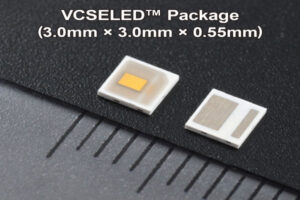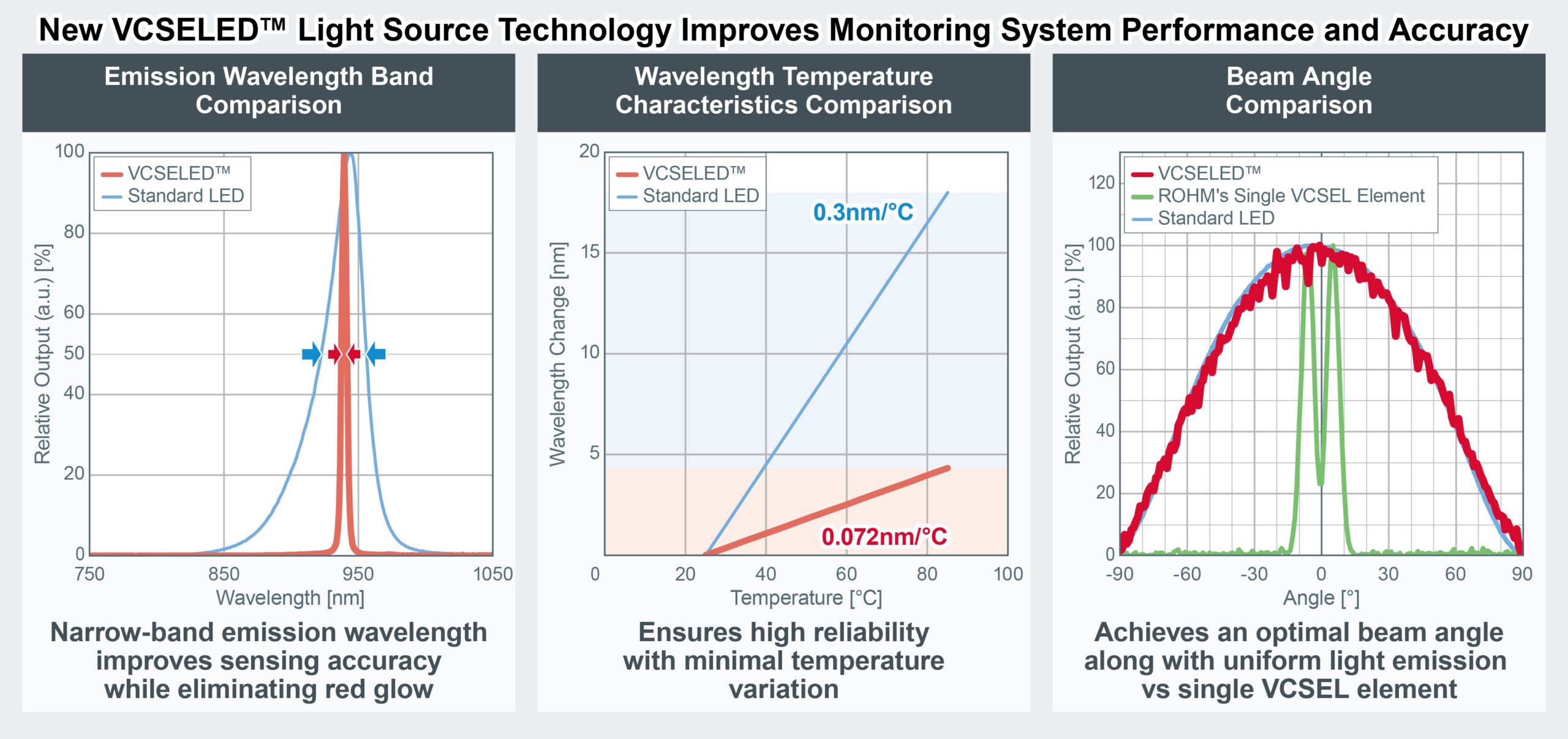A VCSEL (Vertical Cavity Surface Emitting Laser) element is encased in a resin optical diffusion medium for laser light in VCSELED, a novel infrared light source technology developed by ROHM.
This technology is now being developed by ROHM for commercialization as a light source to enhance In-Cabin Monitoring Systems (IMS) and Driver Monitoring Systems (DMS).
Vehicles with Advanced Driver Assistance Systems (ADAS) are increasingly being fitted with driver monitoring systems, which are designed to identify distracted driving, fatigue, and sleepiness in order to further improve automobile safety.
Guidelines outlining the layout and capabilities of the system have been developed by the Ministry of Land, Infrastructure, Transport, and Tourism (MLIT) in Japan. Meanwhile, the European Union intends to mandate installation in all newly sold cars in the region starting in July 2024.
As the requirement for high-performance light sources to enable detection systems to work with higher accuracy grows, automakers and suppliers are also developing in-vehicle monitoring systems to identify passengers other than the driver.
In response, ROHM developed the high-accuracy sensing technology VCSELED. Wide emission beam angle and minimal wavelength temperature variation make it perfect for both in-vehicle monitoring systems and enhancing the precision and efficiency of industrial equipment and robot inspection systems, as well as spatial recognition and ranging systems.
VCSELED extends the beam (irradiation) angle similar to LEDs by combining a high-performance VCSEL element and light diffusion material to enable sensing over a wider area with higher accuracy than VCSELs. What’s more, the light emitting element and light diffuser are integrated into a compact package, contributing to smaller, thinner applications.
The 4nm narrow emission wavelength bandwidth of the VCSEL element utilized in VCSELED is around one-seventh that of LEDs. This feature reduces the red light that is frequently connected to LEDs while also improving resolution performance on the receiving end.
Simultaneously, a wavelength temperature fluctuation of 0.072nm/°C, which is less than one-fourth of that of LEDs (0.3nm/°C), enables temperature-insensitive high-accuracy sensing. Moreover, the light emitting reaction time is 2ns, which is around 7.5 times quicker than that of LEDs. This results in improved performance in ToF (Time of Flight) applications, which employ infrared light to determine distance.
ROHM is working on commercializing VCSELED as a new technology brand for infrared light source components. Prototype samples is available for purchase now, with mass production samples for consumer scheduled for release in October 2024 and automotive use in 2025, respectively.
In the future, ROHM will keep working on developing laser light source technology for various applications, including in-vehicle monitoring.
To obtain samples: CLICK HERE




